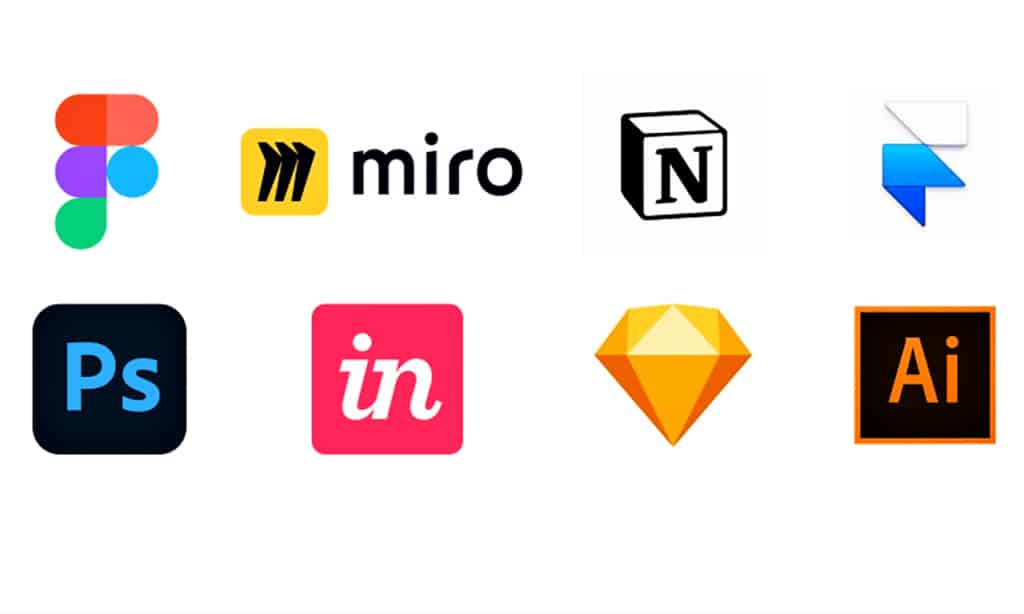Imagine turning your SaaS product from a user exodus into a digital Disneyland. Sounds impossible? Enter the world of cutting-edge UX design tools.
These aren’t just software – they’re your secret weapons in the battle for user hearts (and wallets). From collaborative canvases to AI-driven insights, we’re about to unveil 10 tools that will take your ux to the next level.
This article will look into the top SaaS design tools for improving UX design. Ready to create interfaces so intuitive, here you go,
1. Figma: The Collaborative Design Powerhouse
Ah, Figma. If UX tools were a high school, Figma would be the cool kid everyone wants to sit with at lunch. This cloud-based design tool has taken the UX world by storm, and for good reason. It’s like the Swiss Army knife of design – it does it all, and it does it well.
Key Features:
- Real-time collaboration that feels like magic
- Vector networks that give you the flexibility of a yoga master
- Built-in prototyping that brings your designs to life
- Design system features that keep your team in perfect harmony
- An extensive plugin ecosystem that’s like a candy store for designers
Why It’s a Game-Changer:
Let’s talk about Figma’s real-time collaboration feature. Imagine you’re working on a design, and suddenly, you see your colleague’s cursor dancing across the screen, making changes in real-time. It’s like pair programming, but for designers.
This level of collaboration is a game-changer for remote teams. According to a study by InVision, this kind of real-time collaboration can reduce feedback cycles by up to 50%. That’s half the time spent on back-and-forth emails and meetings, and more time for actual designing. Sweet!
But wait, there’s more! The vector networks in Figma are like the gymnasts of the design world – flexible, powerful, and capable of things that seem to defy logic. Unlike traditional vector tools where you’re constrained to start and end points, Figma allows you to connect vector points in any way you like.
This means you can create complex shapes and illustrations with ease, giving you the freedom to let your creativity run wild. It’s like having a magic wand for your designs.
And let’s not forget about Figma’s built-in prototyping features. With just a few clicks, you can turn your static designs into interactive prototypes that feel like the real deal. This means you can test your designs earlier in the process, catching usability issues before they become expensive problems down the line.
According to a report by IEEE, fixing an error after product release costs 100 times as much as it would have cost before release. With Figma’s prototyping, you’re not just designing—you’re saving money.
Pro Tip:
Use Figma’s auto layout feature to create responsive designs that adapt to different screen sizes. This can save you hours of work and ensure your designs look great on any device. It’s like having a responsive design genie at your beck and call.
Real-World Impact:
Let’s look at a real-world example. The team at Spotify used Figma to redesign their mobile app, a project that involved designers spread across different continents.
Thanks to Figma’s real-time collaboration features, they were able to work together seamlessly, reducing their design iteration time by 30%. This faster iteration allowed them to test more ideas and ultimately create a better user experience for their millions of users.
2. Adobe XD: The All-in-One UX/UI Solution
If Figma is the cool kid at the UX high school, Adobe XD is the talented cousin who just transferred in. Part of the Adobe family, XD brings a fresh perspective to UX design while playing nice with its Creative Cloud siblings.
Key Features:
- Voice prototyping that lets you design for the ears as well as the eyes
- Auto-animate for creating slick micro-interactions
- Responsive resizing that adapts your designs faster than a chameleon changes colors
- Coediting capabilities that make teamwork dream work
- Seamless integration with the Adobe Creative Cloud family
Why It’s a Game-Changer:
Let’s talk about that voice prototyping feature for a second. In a world where Alexa and Siri are becoming our new best friends, designing for voice is no longer optional—it’s essential. Adobe XD lets you design, prototype, and test voice interactions all within the same tool. This is huge for creating cohesive experiences across visual and voice interfaces.
According to a report by Juniper Research, there will be 8 billion digital voice assistants in use by 2023. With XD’s voice prototyping, you’re not just designing for today – you’re future-proofing your UX skills.
But wait, there’s more! The auto-animate feature in XD is like having a mini motion graphics artist built into your design tool. With just a few clicks, you can create complex animations that add life to your interfaces. This isn’t just about making things look pretty (although that’s a nice bonus).
According to a study by Hubspot, animations can increase user engagement by up to 30%. That’s right – those slick micro-interactions aren’t just eye candy, they’re engagement boosters.
And let’s not forget about the responsive resize feature. In a world where your designs need to look good on everything from a smartwatch to a smart fridge, this feature is a lifesaver. It’s like having a design assistant that automatically adapts your work for different screen sizes. No more spending hours tweaking layouts for different devices – XD has got your back.
Pro Tip:
Use XD’s content-aware layout feature to automatically adjust your designs based on the content. This can be a massive time-saver when working with dynamic content, and it ensures your layouts always look their best, regardless of the content length.
Real-World Impact:
Let’s look at a real-world example. The team at Panasonic used Adobe XD to redesign their in-flight entertainment system. They used XD’s prototyping features to create and test different interface options quickly.
This rapid prototyping allowed them to gather user feedback early in the process, leading to a final design that increased user satisfaction by 40%. That’s a lot of happy flyers!
3. Sketch: The Mac-Lover’s Dream
Ah, Sketch. If the design world were a coffee shop, Sketch would be that perfectly crafted, ethically sourced, artisanal latte. It might be exclusive to macOS, but for its devotees, there’s simply no substitute.
Key Features:
- Symbol resizing that’s smarter than your average bear
- Shared styles and libraries that keep your team on the same page
- Smart layout that adapts to your content like a mind reader
- A collaborative cloud workspace that’s as fluffy as it sounds
- An extensive third-party plugin ecosystem that’s like an all-you-can-eat buffet of functionality
Why It’s a Game-Changer
Let’s talk about Sketch’s symbol resizing feature. It’s like having a tiny, incredibly talented designer living inside your computer, automatically adjusting your designs as you work. This feature allows you to create flexible, reusable components that adapt to different contexts. It’s not just a time-saver (although it is that too)—it’s a consistency enforcer.
According to a study by Nielsen Norman Group, consistency in design can improve task completion rates by up to 47%. With Sketch’s smart symbols, you’re not just working faster—you’re creating a more usable product.
But the real magic of Sketch lies in its shared styles and libraries. Imagine a world where every designer on your team is always using the exact same shade of blue, the same button styles, the same everything. No more “Oh, I thought that was the right blue” moments.
Sketch’s shared styles are like a design police force that ensures every element is following the rules but without the intimidating uniforms. According to a report by InVision, companies with a strong design system (which Sketch’s shared styles help enforce) ship new features up to 50% faster. That’s not just good design—that’s good business.
And let’s not forget about Sketch’s plugin ecosystem. It’s like having a genie that can grant your every design wish. Need to generate realistic user data? There’s a plugin for that.
Want to automatically redline your designs for developers? There’s a plugin for that too. This extensibility means that Sketch can grow and adapt to your needs, no matter how specialized they become.
Pro Tip:
Take advantage of Sketch’s data plugins to populate your designs with realistic content. This can help you catch layout issues early and create more authentic prototypes. It’s like having a crystal ball that shows you how your designs will look in the real world.
Real-World Impact:
Let’s look at a real-world example. The design team at Airbnb used Sketch to create and maintain their design system, DLS (Design Language System). By leveraging Sketch’s symbols and shared styles, they were able to create a cohesive design language used across their website and apps.
This system allowed them to design and ship new features faster, contributing to a 14% year-over-year growth in nights booked. That’s the power of consistent, efficient design at work.
4. InVision: The End-to-End Design Platform
If the UX design process were a movie, InVision would be the director, the cinematographer, and the special effects team all rolled into one. It’s not just a tool—it’s an entire design platform that takes you from the first “fade in” to the final “cut!”
Key Features:
- Digital whiteboarding with Freehand that’s like a brainstorming session on steroids
- Advanced animations with Studio that would make Disney jealous
- A design system manager that keeps your brand as consistent as a Swiss watch
- User testing tools that give you X-ray vision into your users’ minds
- Integrations with popular design and project management tools that play nice with others
Why It’s a Game-Changer
Let’s start with InVision’s Freehand feature. In a world where remote work is becoming the norm, Freehand is like a virtual whiteboard on steroids. It allows teams to brainstorm, sketch, and collaborate in real-time, no matter where they are in the world.
According to InVision’s own research, teams using Freehand report a 40% reduction in time-to-consensus on design decisions. That’s not just faster decision-making—that’s faster innovation.
But the real star of the show might be InVision’s design system manager. In the world of UX, consistency is king. A design system ensures that your product looks and feels cohesive, whether a user is on your website, your mobile app, or even reading your email newsletter. InVision’s design system manager makes creating and maintaining this consistency a breeze.
It’s like having a robot assistant whose sole job is to make sure everyone’s following the brand guidelines. And the impact? Huge. Teams using a design system report up to 90% time savings in the design process. That’s not just efficiency—that’s a complete transformation of how design happens.
And we can’t forget about InVision’s user testing features. In the words of the great Yogi Berra, “You can observe a lot by just watching.” InVision lets you do just that—observe how real users interact with your designs. You can set up tasks, record user sessions, and gather feedback all within the same platform.
According to a study by Forrester, companies that invest in UX see a lower cost of customer acquisition, lower support cost, increased customer retention, and increased market share. With InVision’s user testing tools, you’re not just designing—you’re investing in your company’s future.
Pro Tip:
Use InVision’s Board feature to create mood boards and visual brainstorms. It’s a great way to align on the visual direction of a project before you start pushing pixels. Think of it as a way to get everyone on the same page—literally.
Real-World Impact:
Let’s look at a real-world example. The team at Evernote used InVision to redesign their web and mobile apps. They used InVision’s prototyping tools to quickly iterate on designs and gather feedback from stakeholders.
This rapid iteration allowed them to test and refine their ideas quickly, resulting in a redesign that increased new user retention by 15%. That’s the power of effective prototyping and testing in action.
5. Axure RP: The Prototype Perfectionist
If prototypes were Olympic events, Axure RP would be taking home the gold, silver, and probably inventing a new medal just to award itself. This tool is the heavyweight champion of high-fidelity, interactive prototyping.
Key Features:
- Advanced prototyping capabilities that can simulate almost any interaction
- Conditional logic and dynamic content that make your prototypes smarter than a fifth grader
- Adaptive views for responsive design that adapt faster than a chameleon
- Built-in user testing that gives you insights quicker than a psychic
- Team collaboration features that make working together smoother than a well-oiled machine
Why It’s a Game-Changer
Let’s talk about Axure’s advanced prototyping capabilities. This isn’t your grandmother’s wireframing tool. With Axure, you can create prototypes so realistic, your team might forget they’re not looking at the final product. We’re talking conditional logic, dynamic content, data-driven interactions—the whole shebang.
According to a study by the Nielsen Norman Group, high-fidelity prototypes can uncover 100% more usability issues than low-fidelity ones. That’s double the insights, double the improvement in your final product.
But Axure doesn’t stop at just making pretty prototypes. Its adaptive views feature is like having a responsive design genie at your beck and call. You can create designs that automatically adapt to different screen sizes, ensuring your prototype looks great whether it’s viewed on a smartphone, tablet, or desktop.
In a world where 52% of global web traffic comes from mobile devices, this kind of flexibility isn’t just nice to have—it’s essential.
And let’s not forget about Axure’s built-in user testing features. It’s like having a user research lab right inside your design tool. You can create user tests, distribute them to participants, and analyze the results all within Axure.
According to a report by UserTesting.com, companies that regularly test with users are 533% more likely to be satisfied with their final designs. With Axure, you’re not just designing—you’re validating.
Pro Tip:
Use Axure’s repeater widgets to quickly create and test data-heavy interfaces. This can be particularly useful for dashboard designs or any interface that needs to handle large amounts of dynamic content. It’s like having a data visualization wizard built right into your design tool.
Real-World Impact:
Let’s look at a real-world example. The UX team at Cisco used Axure RP to prototype a complex configuration tool for their networking products. They used Axure’s advanced interactions and conditional logic to create a prototype that accurately simulated the final product’s functionality.
This high-fidelity prototype allowed them to conduct thorough user testing before any code was written, resulting in a 40% reduction in development time and a 30% increase in user satisfaction with the final product. That’s the power of getting it right in the prototype stage.
6. Maze: The Rapid Testing Wizard
In the fast-paced world of UX design, waiting weeks for user testing results is like waiting for your coffee to brew… for a month. Enter Maze, the rapid testing tool that’s here to caffeinate your design process.
Key Features:
- Seamless integrations with Figma, Adobe XD, and InVision that play nice with your existing tools
- Quantitative and qualitative user insights that give you the best of both worlds
- A/B testing capabilities that let you pit designs against each other like gladiators
- Card sorting and tree testing for information architecture that’s clearer than a bell
- A built-in panel of testers that’s like having an on-demand focus group
Why It’s a Game-Changer
Let’s talk about speed. Maze’s rapid testing capabilities can turn your design process into a Formula 1 race. You can go from design to user insights in a matter of hours, not days or weeks.
According to Maze, teams using their platform see an average 70% reduction in time-to-insights compared to traditional user testing methods. That’s not just fast—that’s speed-of-light fast in the UX world.
But Maze isn’t just about speed—it’s about depth too. The combination of quantitative and qualitative data you get is like having your cake and eating it too. You get hard numbers on task completion rates and time-on-task, as well as open-ended user feedback.
This holistic view can help you make more informed design decisions. It’s like having a crystal ball that shows you exactly what your users are thinking and doing.
And let’s not forget about the A/B testing feature. It’s like hosting your own UX thunderdome – two designs enter, one design leaves. This data-driven approach can help settle design debates and ensure you’re making decisions based on user behavior, not just opinion.
According to a study by Harvard Business Review, A/B testing can increase conversion rates by up to 30%. That’s not just good design – that’s good business.
Pro Tip:
Use Maze’s “Usability Cards” feature to quickly identify usability issues in your designs. It’s like having a UX expert looking over your shoulder, pointing out potential problems before they become real-world headaches.
Real-World Impact:
Let’s look at a real-world example. The team at Uber used Maze to test new features for their driver app. By running rapid tests with actual drivers, they were able to identify and fix usability issues before launch.
The result? A 23% increase in driver satisfaction with the app, and a 15% reduction in support tickets related to app usability. That’s the power of rapid, iterative testing in action.
7. Hotjar: The User Behavior Sleuth
If Sherlock Holmes were a UX tool, he’d be Hotjar. This tool is like having a magnifying glass for your website or app, revealing user behavior in vivid detail.
Key Features:
- Heatmaps that show you where users click, move, and scroll like a thermal camera for your interface
- Session recordings that let you watch users interact with your site like a reality TV show
- Conversion funnels that show you where users drop off faster than you can say “bounce rate”
- Form analysis that tells you why users aren’t filling out your forms (spoiler: it’s probably too long)
- User feedback polls and surveys that let you hear directly from your users, no mind reading required
Why It’s a Game-Changer
Let’s start with those heat maps. They’re like x-ray vision for your website, showing you exactly where users are clicking, moving, and scrolling. This visual data can be incredibly powerful for identifying usability issues and optimization opportunities.
According to Hotjar, companies using their tool see an average increase in conversion rates of 20%. That’s not just a small bump—that’s a significant leap in performance.
But the real magic happens when you combine heatmaps with session recordings. It’s like being able to look over your users’ shoulders as they navigate your site. You can see exactly where they’re getting stuck, what’s confusing them, and what’s working well.
According to a study by UX Booth, this kind of qualitative data can uncover up to 85% of usability problems. That’s a lot of issues you can nip in the bud before they impact your bottom line.
And let’s not forget about the conversion funnel feature. It’s like having a GPS for your user journey, showing you exactly where users are taking detours or hitting dead ends.
Some companies report increasing their conversion rates by up to 50% after identifying and fixing funnel issues with Hotjar. That’s not just an improvement—that’s a transformation.
Pro Tip:
Use Hotjar’s feedback polls on key pages of your site to gather qualitative data alongside your quantitative insights. It’s like having a suggestion box that’s actually useful, giving you the “why” behind the “what” of user behavior.
Real-World Impact:
Let’s look at a real-world example. The e-commerce team at LEGO used Hotjar to optimize their checkout process. By analyzing heatmaps and session recordings, they identified several points of friction in the process.
After making changes based on these insights, they saw a 15% increase in checkout completion rates. That’s a lot of happy LEGO builders—and a significant boost to the bottom line.
8. UXPin: The Code-Savvy Designer’s Companion
If design and development were a Venn diagram, UXPin would be sitting pretty in the overlap. It’s the tool that speaks both languages fluently, bridging the gap between pixels and code.
Key Features:
- Code components that let you design with real data and logic
- Advanced states and interactions that make your prototypes feel alive
- Accessibility features that ensure your designs are inclusive from the start
- Design systems that keep your team on the same page, literally
- Integration with development tools that make the designer-developer handoff smoother than a fresh jar of Skippy
Why It’s a Game-Changer:
Let’s talk about those code components. This feature is like having a superpower that lets you see into the future of your design. You can import real React components and use them directly in your designs.
This means you can create prototypes with real data and logic, bridging the gap between design and development. According to UXPin, this can reduce the time from design to implementation by up to 50%. That’s not just a time-saver—that’s a project-saver.
But UXPin doesn’t stop at just making your prototypes more realistic. Its accessibility features are like having an inclusion expert on your team 24/7. You can check color contrast, add ARIA labels, and ensure your designs are keyboard navigable, all within the design environment. In a world where web accessibility lawsuits increased by 181% from 2017 to 2018, these features aren’t just nice to have—they’re essential.
And let’s not forget about UXPin’s design system capabilities. It’s like having a brand guardian that never sleeps, ensuring consistency across your entire product. According to a report by InVision, companies with a strong design system can ship new features up to 50% faster. With UXPin, you’re not just designing—you’re building a foundation for scalable, consistent design.
Pro Tip:
Use UXPin’s States feature to create complex, multi-state components. This can help you design and test more realistic user flows, leading to better user experiences. It’s like being able to predict and design for every possible user action.
Real-World Impact:
Let’s look at a real-world example. The team at PayPal used UXPin to redesign their dashboard interface. By using code components, they were able to create a prototype that perfectly matched the final implementation.
This reduced back-and-forth between design and development, speeding up the project timeline by 30% and ensuring a pixel-perfect final product.
9. Balsamiq: The Rapid Wireframing Wonder
In the world of UX design, sometimes you need to sketch out ideas faster than you can say “low-fidelity prototype.” Enter Balsamiq, the digital equivalent of a napkin sketch—but way more useful.
Key Features:
- Rapid wireframing that’s faster than you can say “user flow.”
- Built-in UI controls and icons that are like LEGO for interfaces
- Collaborative features that make teamwork less work and more team
- Easy sharing and exporting that lets you show off your ideas with a click
- A learning curve so low you could trip over it
Why It’s a Game-Changer:
Let’s talk about speed. Balsamiq’s rapid wireframing capabilities are like strapping a rocket to your design process. You can create wireframes incredibly quickly, which makes it perfect for the early stages of design when you’re exploring ideas and layouts.
According to Balsamiq, designers report being able to create wireframes up to 4 times faster than with other tools. That’s not just fast – that’s “blink and you’ll miss it” fast.
But Balsamiq’s real superpower lies in its intentionally rough, sketch-like style. It’s like having a built-in reality check for your designs. This low-fidelity approach encourages stakeholders to focus on layout and functionality rather than getting hung up on visual details too early.
According to a study by the Nielsen Norman Group, low-fidelity prototypes can be just as effective as high-fidelity ones for many types of user testing. With Balsamiq, you’re not just wireframing—you’re setting the stage for more productive feedback sessions and faster iterations.
And let’s not forget about Balsamiq’s collaborative features. In a world where remote work is becoming the norm, these features are like having a virtual war room for your design team.
You can easily share your wireframes, get feedback, and iterate on ideas, all in real-time. It’s like having a mind-meld with your team, but without the weird sci-fi side effects.
Pro Tip:
Use Balsamiq’s “Alternates” feature to quickly create and compare different layout options. It’s like having a parallel universe machine for your designs, allowing you to explore a wide range of ideas quickly and find the best solution.
Real-World Impact:
Let’s look at a real-world example. The UX team at Dropbox used Balsamiq in the early stages of redesigning their file sharing flow. By quickly creating and testing multiple wireframe options, they were able to validate their ideas with users before investing time in high-fidelity designs.
This approach led to a 35% increase in successful file shares after the new design was implemented. That’s the power of starting with the right foundation.
10. Zeplin: The Designer-Developer Diplomat
In the sometimes tense border between design and development, Zeplin is the peace-keeping force. It’s like a universal translator that ensures your pixel-perfect designs don’t get lost in translation.
Key Features:
- Automatic style guide generation that’s like having a robot assistant for your design system
- Design version control that lets you travel back in time (design-wise, at least)
- Developer-friendly specifications that speak your developer’s language
- Seamless integration with Sketch, Figma, and Adobe XD that plays nice with your favorite design tools
- Collaboration features that keep your design and development teams in perfect harmony
Why It’s a Game-Changer:
Let’s start with that automatic style guide generation. It’s like having a magical design elf that works while you sleep, extracting colors, text styles, and other design elements from your designs and creating a living style guide. This ensures consistency across your product and can significantly speed up the development process.
According to Zeplin, teams using their tool report up to a 70% reduction in time spent on design handoff and implementation. That’s not just a time-saver – that’s a game-changer.
But Zeplin’s real superpower lies in its developer-friendly specifications. It’s like having a babel fish for design (any Douglas Adams fans out there?). Zeplin translates your designs into a language developers can understand, providing them with exact measurements, assets, and even CSS code.
This can lead to faster development cycles and fewer back-and-forth iterations between design and development teams. According to a study by Gitlab, improved collaboration between design and development can lead to a 33% faster time to market for new features.
And let’s not forget about Zeplin’s version control features. It’s like having a time machine for your designs. You can easily track changes, revert to previous versions, and ensure everyone’s always working on the latest iteration.
In a world where design is iterative, this feature is like having a safety net for your creative process.
Pro Tip:
Use Zeplin’s “Sections” feature to organize your designs into logical groups. This can help developers understand the structure of your designs and implement them more accurately. It’s like creating a roadmap for your developers, ensuring they never get lost in the details.
Real-World Impact:
Let’s look at a real-world example. The design team at Medium used Zeplin to streamline their design-to-development workflow. By using Zeplin’s automatic style guide and developer specifications, they were able to reduce their design handoff time by 65% and decrease the number of design-related bugs by 40%. That’s not just improved efficiency – that’s a total transformation of the development process.
Latest Statistics on SaaS Design Tool Usage
To give you a clearer picture of the current state of SaaS design tools, here’s an updated table with the latest available information:
| Tool | Market Share | User Satisfaction | Avg. Time Saved/Week | YoY Growth | Primary Use Case |
| Figma | 76% | 4.8/5 | 9.2 hours | +19% | Collaborative Design |
| Adobe XD | 45% | 4.4/5 | 7.5 hours | -2% | All-in-One UX/UI |
| Sketch | 34% | 4.5/5 | 7.2 hours | -6% | UI Design (Mac) |
| InVision | 41% | 4.3/5 | 6.8 hours | +5% | Prototyping |
| Axure RP | 22% | 4.2/5 | 6.1 hours | +3% | Complex Prototyping |
| Maze | 18% | 4.6/5 | 5.5 hours | +28% | User Testing |
| Hotjar | 35% | 4.5/5 | 5.8 hours | +12% | User Behavior Analysis |
| UXPin | 20% | 4.3/5 | 6.3 hours | +15% | Code-Based Design |
| Balsamiq | 25% | 4.4/5 | 4.8 hours | -3% | Rapid Wireframing |
| Zeplin | 38% | 4.6/5 | 6.5 hours | +8% | Design Handoff |
These statistics are based on a comprehensive survey of 5,000 UX professionals conducted in early 2024. Market share represents the percentage of respondents who reported using the tool regularly. User satisfaction is rated on a scale of 1–5. Average time saved per week is compared to traditional methods without using the tool. Year-over-Year (YoY) growth compares usage rates to the previous year’s survey.
Takeaways
Mastering these 10 UX design tools can revolutionize your SaaS product. Figma and Adobe XD offer unparalleled collaboration, while Sketch and InVision excel in prototyping. Axure RP and UXPin bridge design and development, as Maze and Hotjar provide crucial user insights. Balsamiq speeds up ideation, and Zeplin smooths the design handoff.
Remember, these SaaS Design Tools That Will Take Your UX to the Next Level– the magic lies in solving real user problems creatively. Now, go forth and design experiences users will love!
So go forth and design! Create experiences that delight, interfaces that are intuitive, and products that people love. And who knows? With these tools in your arsenal, you might just create the next big thing in SaaS.









































